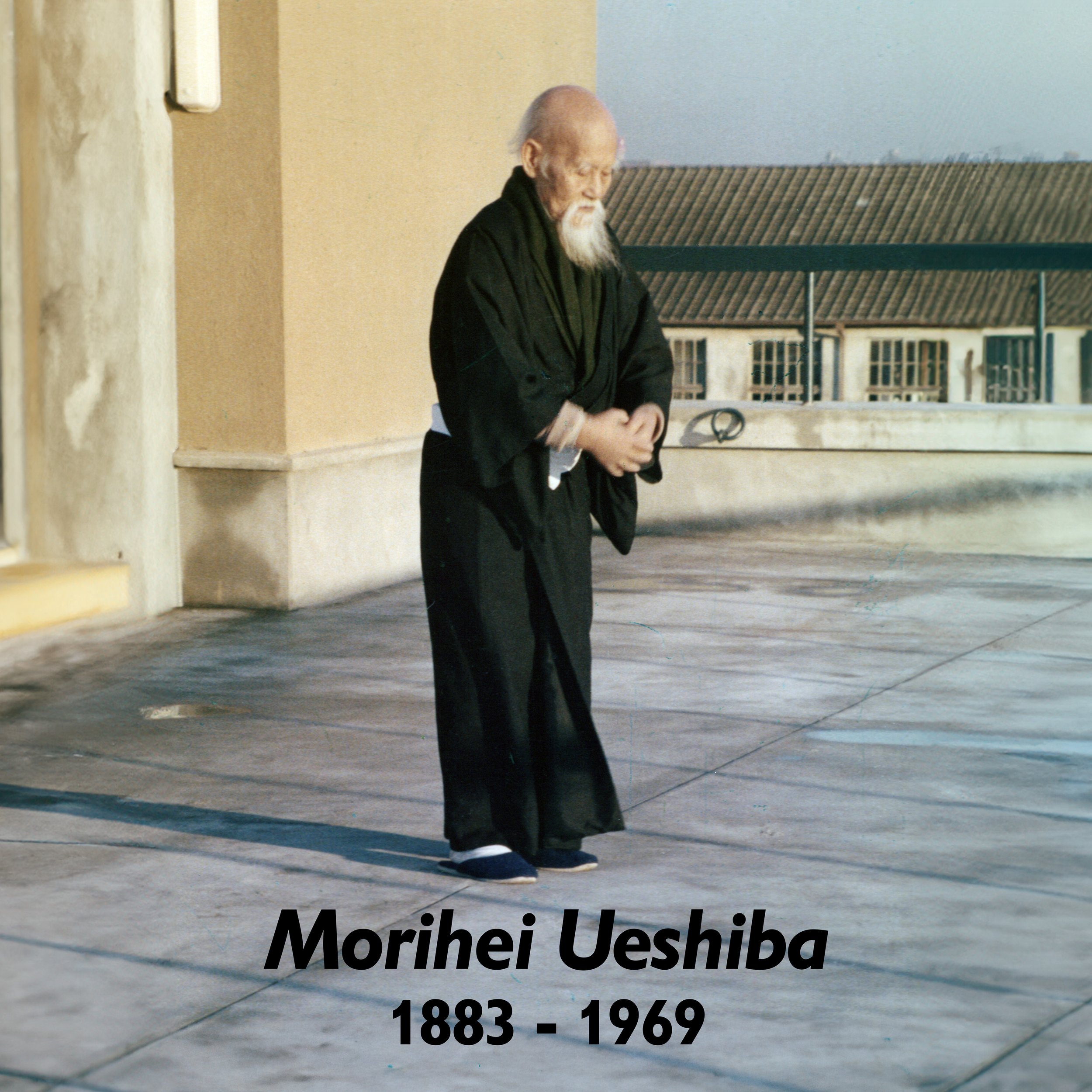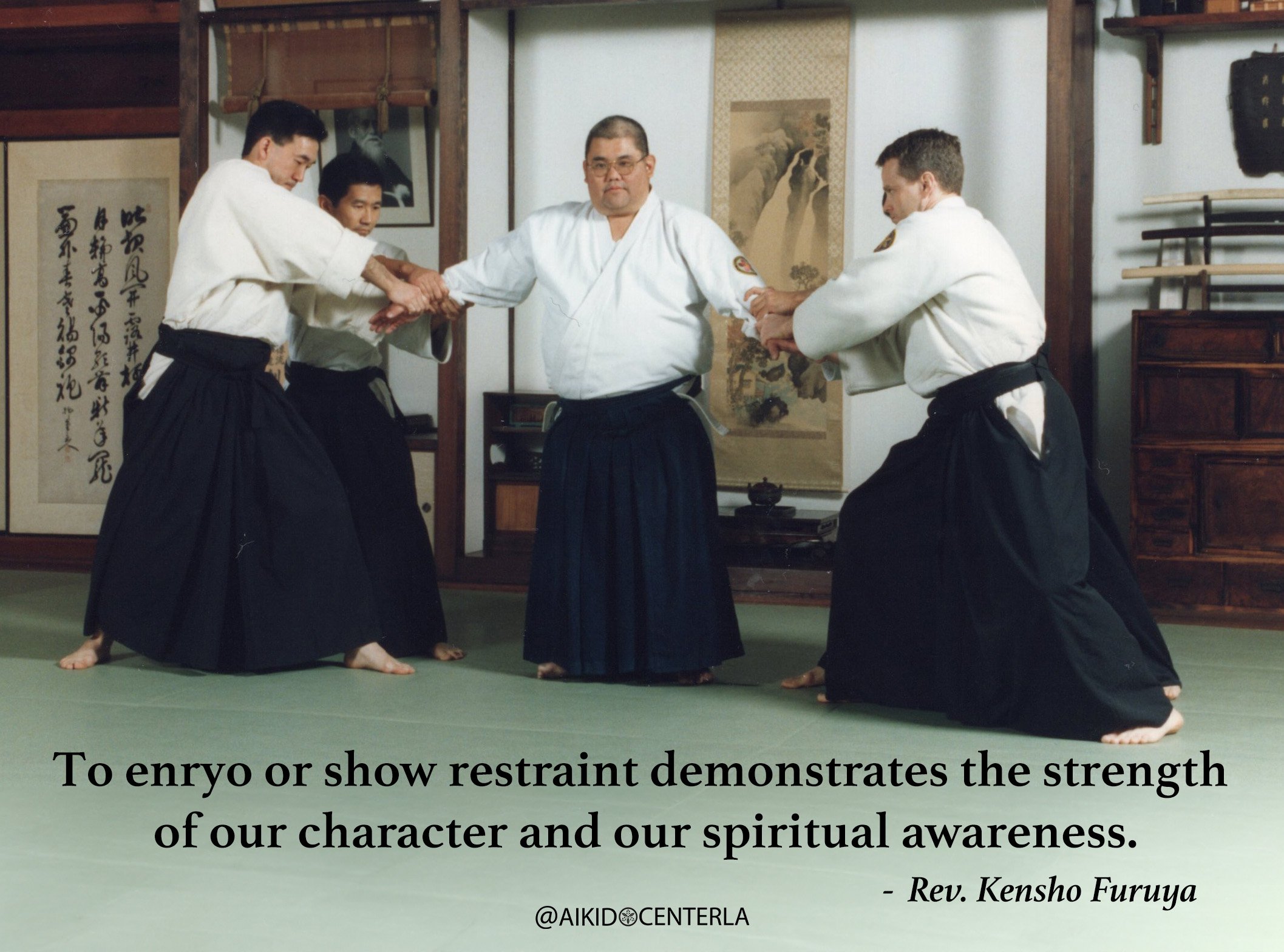臨 兵 闘者皆陣列在前
Rin byo to sha kai jin retsu zai zen
The bravest warrior excels at the front of the battlefield
The best Aikidoists move forward.
Psychologists tell us that there are five hardwired responses to stress: fight, flight, freeze, flop, and fawn. There is actually a sixth - Aikido. Most of the responses to stress are either passive or aggressive. Aikido is neither - it is proactive. To be proactive is to take control of the situation or attacker. In Aikido, we talk about this concept called awaseru (合わせる). Awaseru means “to unite” but people take this understanding to mean “harmony.” In other words, Aikidoist harmonize with the attack or stressor. We don’t fight or resist the attack, that is aggression. We also don’t become passive and fall apart or freeze out of fear and we definitely don’t just give in and comply. In Aikido, to awaseru, we move in or move with the attack, change the orientation of its power, create alignment with that power, and then redirect that power into something useful like a pin, throw, or joint lock. However, this is easier said than done. To get to this level where we can be proactive instead of reactive takes time and training.
In Aikido training, one of the first things we learn is how to irimi (入身) or “move in.” The reason why is because irimi is the gateway to Aikido movement. It is the gateway because moving into an attack is counter intuitive and irimi teaches us how to have composure to do so. When we are attacked, our basic survival instincts kick in and we either fight or run away. To move into an attack requires not only technique but also courage. In the beginning, we will be late out of fear and/or lack of technique. This lag causes our timing to be late which will enable our opponent to crush us with their strike or jam us up with their grab. With time and training, we become more developed, and our bodies move appropriately. But more than movement, our minds will become somewhat desensitized to the fear of moving in and this is where this idea of harmony comes into play. Harmony is more of an internal phenomenon rather than an external physical response. When we have overcome the fear, our bodies and minds achieve seijaku (静寂) or “quietude.” In Zen, they say that with this quietude comes a “calmness of the heart” or a stillness within. With this calmness or quietude, we can meet that which confronts us with complete composure and truly awaseru or harmonize with the attack rather than fight against it.
Aikido and life are really about the confrontation of fear. Fear shows us where we need to put in the work in. Anyone can punch adversity in the face but only a developed person can move forward and harmonize with their fears. Furuya Sensei was fond of this expression, “rin byo to sha kai jin retsu zai zen” which means “The bravest warrior excels at the front of the battlefield.” We cannot grow if we cower in the back. The only way to be free of our fears and grow is to move forward into them. In the Hagukure, Yamamoto Tsunetomo wrote, “Whenever you meet difficult situations dash forward bravely and joyfully.” Thus, the best Aikidoists move forward relentlessly but also joyfully.
Today’s goal: Once you find your path, move forward and be relentless, but don’t forget to smile joyfully.
Watch this video to better understand confronting fear





















